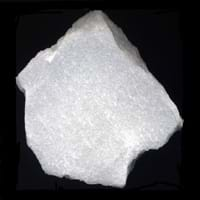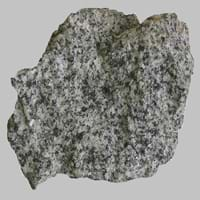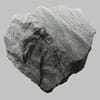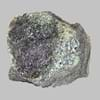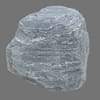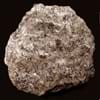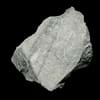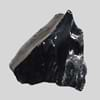Definition
Marble is a non-foliated metamorphic rock which is composed of recrystallized carbonate which is formed when limestone is exposed to high temperatures and pressures over a long time
Diorite is a grey to dark-grey intermediate intrusive igneous rock composed principally of plagioclase feldspar,biotite, hornblende, and pyroxene
Discoverer
Unknown
Unknown
Etymology
From the Greek marmaros, shining stone and also from the English word marmoreal meaning marble-like
From early 19th century coined in French, formed irregularly from Greek diorizein distinguish
Class
Metamorphic Rocks
Igneous Rocks
Sub-Class
Durable Rock, Medium Hardness Rock
Durable Rock, Hard Rock
Group
Not Applicable
Plutonic
Other Categories
Medium Grained Rock, Opaque Rock
Coarse Grained Rock, Medium Grained Rock, Opaque Rock
Texture
Granular
Phaneritic
Color
Black, Blue, Brown, Grey, Pink, White
Black, Brown, Light to Dark Grey, White
Durability
Durable
Durable
Appearance
Veined and Shiny
Shiny
Interior Uses
Bathrooms, Countertops, Decorative Aggregates, Entryways, Floor Tiles, Homes, Hotels, Interior Decoration, Kitchens, Stair Treads
Decorative Aggregates, Interior Decoration
Exterior Uses
As Building Stone, As Facing Stone, Garden Decoration, Office Buildings, Paving Stone
As Building Stone, As Facing Stone, Garden Decoration
Other Architectural Uses
Not Yet Used
Curbing
Construction Industry
As Dimension Stone
As Dimension Stone, Cement Manufacture, Cobblestones, Construction Aggregate, for Road Aggregate
Medical Industry
Not Yet Used
Not Yet Used
Antiquity Uses
Artifacts, Jewellery, Monuments, Sculpture, Small Figurines
Artifacts, Monuments, Sculpture, Small Figurines
Commercial Uses
Cemetery Markers, Commemorative Tablets, Creating Artwork, Curling, Laboratory bench tops, Paper Industry, Tombstones, Used in aquariums, Whiting material in toothpaste, paint and paper
Creating Artwork, Curling
Types
Breccia Marble, Carrara Marble, Calacatta marble, Cultured Marble, Polished Marble, Honed Marble, Sand Marble
Not Available
Features
Available in Lots of Colors and Patterns, Easily splits into thin plates, Generally rough to touch, Is one of the oldest rock
Typically speckled black and white.
Archaeological Significance
Famous Monuments
Al Aqsa Mosque in Jerusalem, Buland Darwaza in Agra, India, Capitol Hill Building, Washington DC, Charminar in Hyderabad, India, Chhatrapati Shivaji Terminus in Maharashtra, India, Ephesus in Turkey, Faisal Mosque in Islamabad, Pakistan, Humayun's Tomb in Delhi, India, Jama Masjid in Delhi, India, Lotus Temple in New Delhi, India, Louvre in Paris, France, Mysore Palace in Karnataka, India, Neuschwanstein in Bavaria, Palace of Parliament in Bucharest, Romania, Parthenon in Greece, Potala Palace in Lahasa, Tibet, Prophet’s Mosque in Medina, Qutb Minar in India, Saint Basil's Cathedral in Moscow, Russia, St. Peter’s Cathedral in Vatican City, Taj Mahal in Agra, India, Tower of Pisa, Italy, Victoria Memorial in Kolkata, India, Washington Monument, US
Data Not Available
Famous Sculptures
Ajanta Caves in Maharashtra, India, Bust of Artemis, Elephanta Caves in Maharashtra, India, Lincoln Memorial in America
Data Not Available
Pictographs
Used
Not Used
Petroglyphs
Used
Not Used
Formation
Marble is a metamorphic rock produced from limestone in the earth crust. It is formed by the metamorphism of limestone.
Diorite is a coarse-grained intrusive igneous rock which contains large interlocking and randomly oriented crystals and forms when molten lava does not reach the Earth’s surface and cools down in the Earth’s crust.
Mineral Content
Garnet, Graphite, Olivine, Pyrite, Quartz
Albite, Amphibole, Apatite, Biotite, Feldspar, Hornblade, Ilmenite, Magnetite, Muscovite or Illite, Olivine, Plagioclase, Pyroxene, Quartz, Sulfides, Titanite, Zircon
Compound Content
CaO, Iron(III) Oxide, FeO, MgO, Silicon Dioxide
Silicon Dioxide
Types of Metamorphism
Impact Metamorphism
Cataclastic Metamorphism, Contact Metamorphism, Regional Metamorphism
Types of Weathering
Biological Weathering, Chemical Weathering, Mechanical Weathering
Biological Weathering, Chemical Weathering, Mechanical Weathering
Types of Erosion
Chemical Erosion, Coastal Erosion
Chemical Erosion, Coastal Erosion, Water Erosion
Grain Size
Medium Grained
Medium to Coarse Grained
Fracture
Not Available
Not Available
Streak
White
Bluish Black
Porosity
Less Porous
Very Less Porous
Luster
Dull to Pearly to Subvitreous
Shiny
Cleavage
Perfect
Not Available
Toughness
Not Available
2.1
Specific Gravity
2.86-2.87
2.8-3
Transparency
Opaque
Opaque
Density
2.4-2.7 g/cm3
2.8-3 g/cm3
Specific Heat Capacity
Not Available
Resistance
Heat Resistant
Heat Resistant, Pressure Resistant, Wear Resistant
Deposits in Eastern Continents
Asia
China, India
Not Yet Found
Europe
Italy, Spain
Finland, Germany, Italy, Romania, Sweden, Turkey, United Kingdom
Others
Not Yet Found
Not Yet Found
Deposits in Western Continents
North America
Not Yet Found
USA
South America
Not Yet Found
Argentina, Bolivia, Chile, Colombia, Ecuador, Peru
Deposits in Oceania Continent
Australia
New South Wales, New Zealand, Queensland, Victoria
New Zealand, Western Australia
